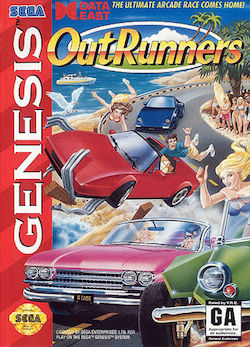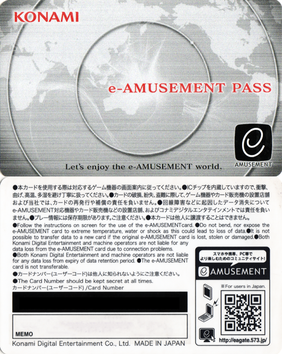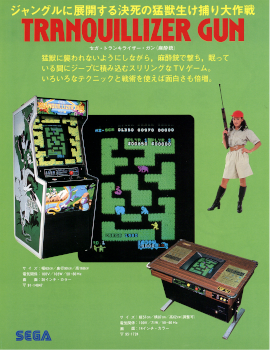
Sega AM Research & Development No. 3, known as Hitmaker Co., Ltd. from 2000 to 2004, is a defunct division of Sega, a Japanese video game company. Established by 1993, AM3 was managed by Hisao Oguchi and developed a number of arcade games for Sega. Series introduced by AM3 include Virtual On, Sega Rally, Crazy Taxi, and Virtua Tennis. AM3's main focus was on arcade games until the release of the Dreamcast. Additionally, developers Tetsuya Mizuguchi and Kenji Sasaki developed Sega Rally Championship with AM3 before departing to form AM Annex, which later split into Sega AM9 and Sega AM5.

Sega AM Research & Development No. 2, previously known as SEGA-AM2 Co., Ltd., is a video game development team within the Japanese multinational video game developer Sega. Yu Suzuki, who had previously developed arcade games for Sega including Hang-On and Out Run, was the first manager of the department.

CAVE Interactive Co., Ltd. is a Japanese video game company founded in 1994 by former employees of Toaplan following its bankruptcy. They are known primarily for their "bullet hell" shoot 'em ups; from 1995 up to 2013, CAVE was one of the most prolific shoot 'em up developers in the Japanese market. Alongside this, CAVE has produced a variety of other types games for arcades, home consoles, PCs, and smartphones, also dating back to 1995.

OutRunners (アウトランナーズ) is a racing video game developed by Sega and AM1 and released in Japan, Europe, and North America in 1993. It constitutes the third release in the arcade OutRun series and was ported to the Mega Drive in 1994.

e-Amusement, stylized as e-amusement, is an online service operated by Konami, used primarily for online functionality on its arcade video games. The system is used primarily to save progress and unlockable content between games, participate in internet high score lists, access other exclusive features depending on the game, and access the Paseli digital currency service.

World Club Champion Football is a Japanese collectible card game and football/soccer sports arcade video game released by Sega. The game is officially abbreviated as WCCF. It is the first arcade game to combine trading cards with a video game, establishing a new genre of arcade game. The game was mostly released in Japan and has never received a port.

Sega AM Research & Development No. 1 is a development department within Japanese video game developer Sega that also previously existed as Wow Entertainment and Sega Wow Inc. AM1 spent most of its early existence under the leadership of Rikiya Nakagawa and developed a number of arcade games for Sega.

Sangokushi Taisen is a hybrid physical and digital collectible card game for the arcade, on the Chihiro arcade board. It is a real-time strategy-based game set in the Three Kingdoms period of Chinese history and the 14th century Chinese novel Romance of the Three Kingdoms by Luo Guanzhong. It uses the same housing as World Club Champion Football, with a sensitive playing area that can detect the position of the physical cards. Over 500 million trading cards have been shipped. It is the sixth trading card arcade game by Sega, following World Club Champion Football,Mushiking: The King of Beetles, The Key of Avalon,Love and Berry: Dress up and Dance! and Quest of D.

This is a list of development studios owned by Sega, a Japanese video game developer and publisher based in Tokyo, Japan. Accompanied with the list is their history of game development. Also included are the companies that Sega has acquired over the years. For a full list of games developed and published by Sega, see List of Sega video games, List of Sega mobile games and List of Sega arcade games.

Sega Sports Research and Development or Sega Sports R&D is a defunct development division of the Japanese video game company Sega. It was previously known as Smilebit, one of nine semi-autonomous studios which Sega established in 2000. Smilebit was previously known as R&D6 or AM6 which itself was mainly based on Sega PC. Smilebit was known for its sports simulation titles, as well as Jet Set Radio. When Sega started releasing games for other platforms, Smilebit began developing games for the Xbox, with Jet Set Radio Future, Panzer Dragoon Orta and GunValkyrie. Smilebit was led by Shun Arai as president and Takayuki Kawagoe as director. Kawagoe became president of Smilebit in 2003.

"Shōjo S" (少女S) is the third major single released by Japanese pop rock band Scandal. The title track was used as the tenth opening theme for the anime Bleach, as well as the opening song for the Nintendo DS game Bleach DS 4th: Flame Bringer. The single was released in three versions: two limited editions and a regular edition, all with different track lists. Limited edition A came with a Bleach notebook while limited edition B came with a fold-out poster of Scandal on one side and Bleach on the reverse. Both limited versions came with a Bleach sticker. The single reached #6 on the Oricon weekly chart and charted for thirteen weeks. Because it sold 33,881 copies in 2009, it was the #194 single of that year. It was certified gold by the RIAJ for selling over 100,000 digital copies in August 2009.

Spike Chunsoft Co., Ltd. is a Japanese video game development and localization company specializing in role-playing video games, visual novels and adventure games. The company was founded in 1984 as Chunsoft Co., Ltd. and merged with Spike in 2012. It is owned by Dwango.

CA Sega Joypolis Ltd. is a subsidiary of the Chinese company China Animations Character Co., which controls Sega-branded Amusement Parks in Asia, such as Joypolis.

Tranquilizer Gun is a multi-directional shooter arcade game released in 1980 by Sega.

Dragon Treasure is an arcade game developed by Overworks and published by Sega in 2003 for the Sega NAOMI arcade board for Japanese arcades. The game is a coin-pusher game combined with a role-playing game, and can be played by multiple people. Progress can be stored on an IC card and can be resumed on any machine, which was new for medal games in Japan at the time. It received two sequels with Dragon Treasure II in 2004 and Dragon Treasure III in 2005.

Sega Network Taisen Mahjong MJ is a mahjong arcade game developed by Sega AM2 and released by Sega. The first version for arcades was released in July 2002 for the Sega NAOMI 2 arcade system. It featured online features with ranking, customization and recording your play history, using the experience that AM2 had developed from Virtua Fighter 4 and VF.NET. It received numerous updates and sequels since then.

Quest of D is an arcade game developed by Sega AM2 and published by Sega on the Chihiro arcade board. It is the fifth trading card arcade game by Sega, following World Club Champion Football,Mushiking: The King of Beetles, The Key of Avalon and Love and Berry: Dress up and Dance!. It is an action-role playing game in dark a fantasy setting and is online enabled similar to previous AM2 titles Virtua Fighter 4 and Sega Network Taisen Mahjong MJ.

Shining Force Cross is an action role-playing game developed by Sega AM2 and published by Sega on the Sega RingEdge arcade platform. It is part of the Shining series from Sega. It is developed by the same development team as Quest of D. It was only released in Japan in arcades and received no port of any kind.
Avalon no Kagi, alternatively known as The Key of Avalon is an arcade game developed by Hitmaker and published by Sega on the Triforce arcade board. It is the third card arcade game by Sega, following World Club Champion Football and Mushiking: The King of Beetles. It is a combination of sugoroku style board game and combat trading card game. It was followed by a sequel called The Key of Avalon 2: Eutaxy Commandment which was updated as The Key of Avalon 2.5: War of the Key.


















